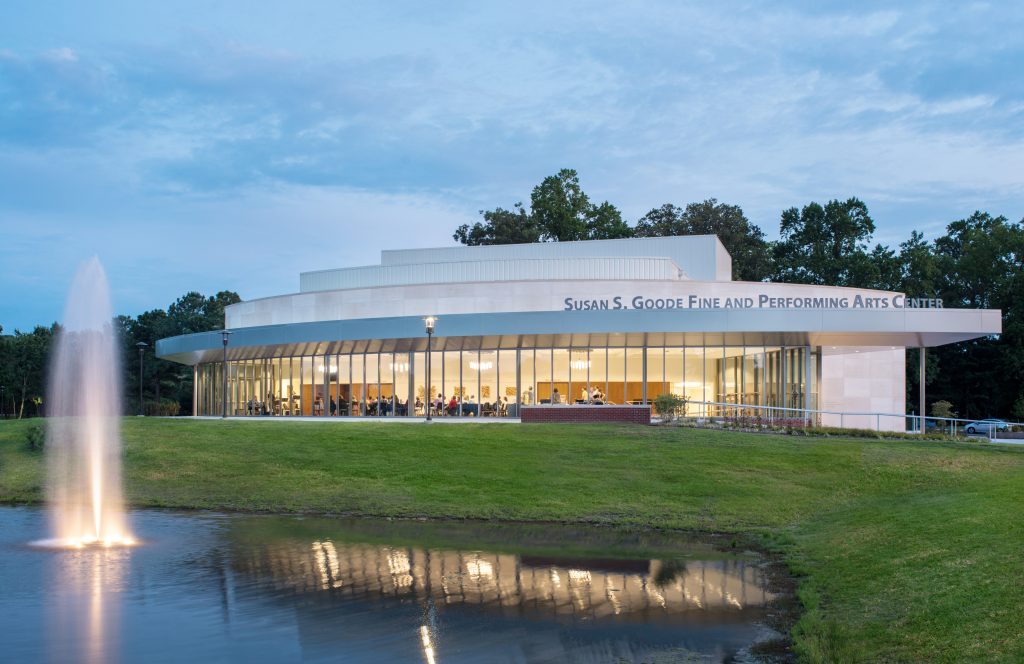
Susan S. Goode Fine and Performing Arts Center- Hourigan
Performance venues have evolved over the years to better support talent (both on stage and behind the scenes) and attract new patrons. The performing arts, as a discipline, has seen significant change, as new technologies have allowed them to advance their modes of artistic expression. Performers today are exercising their talents and disciplines through new media mainly due to the development of technologies. Design and construction methods related to audio amplification, video projection, theatrical lighting, acoustical engineering, and “room shaping” and sound isolation have changed how performing art venues are designed and built. As the performing arts transform, the facilities that support them must be modeled to support these changes. To provide elite experiences within a performance venue, design and construction teams should consider the following key aspects.
ACOUSTICS & SOUND ISOLATION
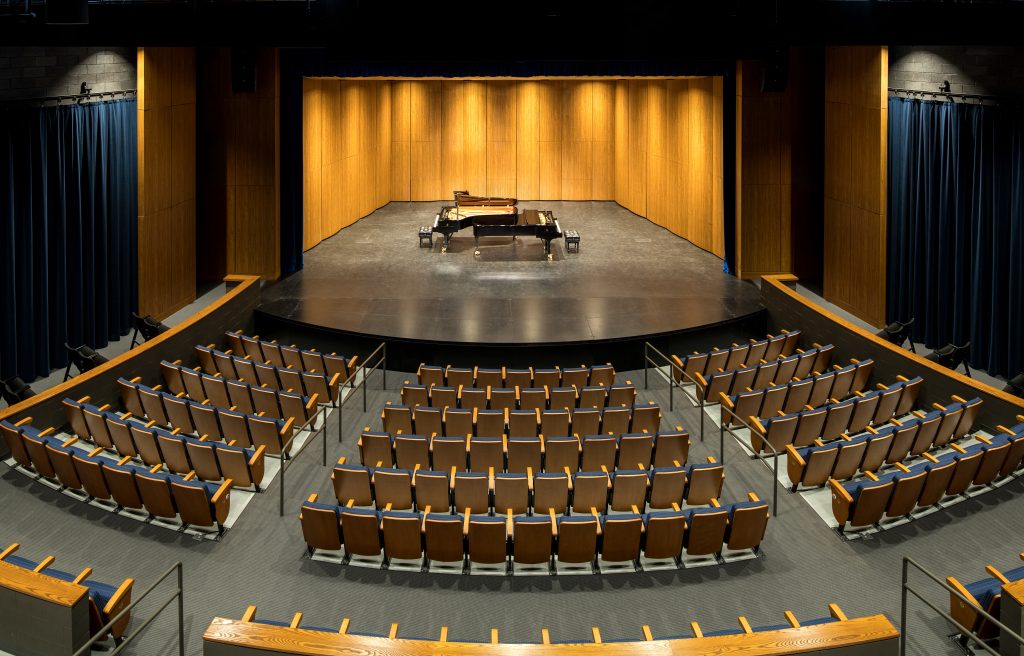
Susan S. Goode Fine and Performing Arts Center- Hourigan
Acoustics and sound isolation are paramount to successful construction of a performance venue. Though general knowledge of architectural acoustics has been around for centuries, acoustical engineering as a hard science has only been considered since the early 1900s. As technologies continue to advance, greater focus has been placed on implementing acoustic design features and equipment.
For example, separating the performance space from outside noise is crucial by integrating sound and vibration isolation systems, like thicker wall masses, or separating the floor and wall systems from the building structure with springs. This keeps outside ambient noise, such as traffic and weather, out of the performance space and keeps performance noise from infiltrating other areas within a facility that may be used concurrently. Sound and vibration isolation techniques create the ideal acoustical environment and make this one of the most essential factors in creating a performing arts venue.
TRANSFORMATION OF LIGHTING
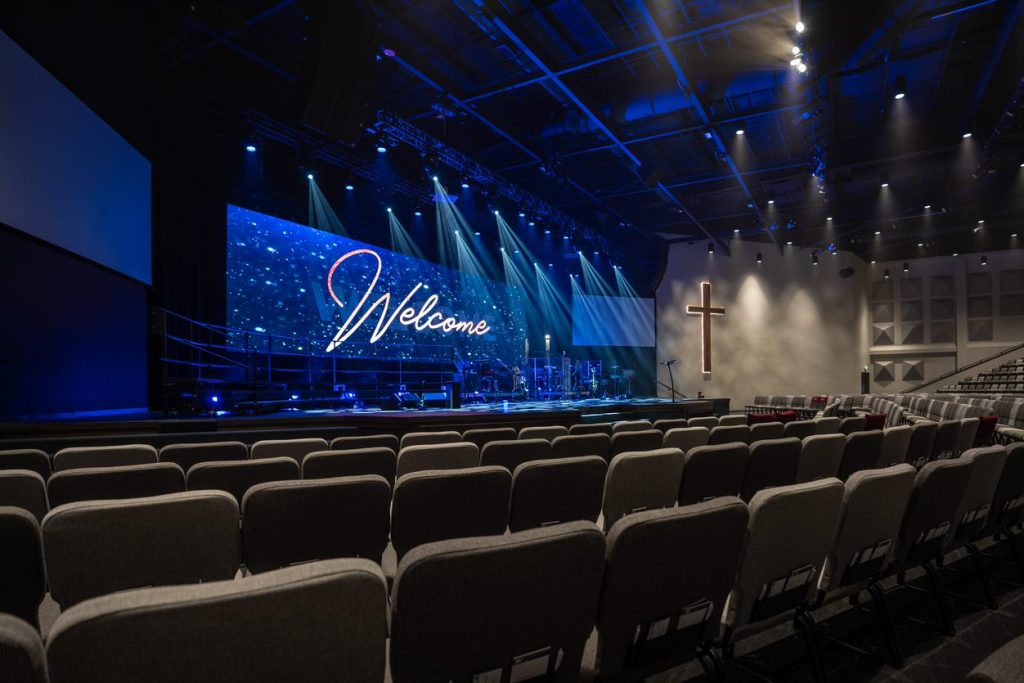
Severns Valley Baptist Church – Project by Hourigan Project Executive, Jody Forehand, with previous firm
Lighting is transformational to a stage and performance; thus, it is generally considered a top priority in the design and construction of performance venues. Traditional incandescent theatrical lighting generates significant heat and trails behind newer LED technologies in energy efficiency. LED lighting technology has seen marked efficiency improvements in recent years, which has led to a substantial decrease in their upfront costs, making it a more sustainable alternative. The advances in lighting quality have made LED a much more attractive option for performing arts venues without sacrificing control over lighting intensity and color.
CONSTRUCTIBILITY
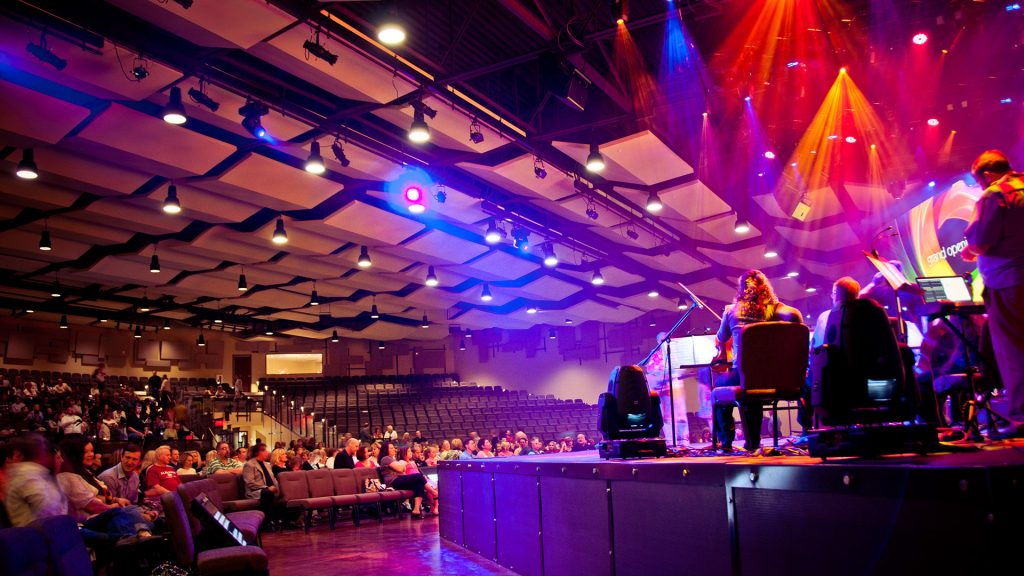
Northeast Christian Church – Project by Hourigan Project Executive, Jody Forehand, with previous firm
Power Requirements
Power access that is sufficient for all users’ needs should be a preliminary consideration early in the project. This will require close coordination with the local power company to consider load calculations and connections that bring the power necessary for efficient and effective operation.
Utilities
Stemming from the importance of power requirements are other utility considerations. Detailed investigations of the condition, capacity, and location of other necessary utilities are critical to be provided to the facility at the proper time. Often, utility work is done as an early release package, so that utility connections don’t impact the building construction timeline.
Loading Dock Access
Depending on the final design, it is important to work with the client to determine how the loading dock space can operate most efficiently for load-in and load-out of scenery, props, equipment, and other elements used in the facility. Easy access to the backstage and stage areas should be a key factor in the placement of the loading dock.
MEP SYSTEMS
Noisy HVAC systems can potentially interfere with the audience’s experience during a performance. Being strategic about mechanical and electrical systems is important when designing and constructing performing arts venues through the coordination and implementation of MEP systems such as the following:
Raised Floor Systems for Ductwork
Implementing under-floor systems for HVAC supply registers in the seating area allows air to come in at a low volume and velocity reducing interruptions of the performance and experience of the audience.
Larger Ductwork
Larger ductwork minimizes air noise and “wind” that can flutter curtains and cause vibrations. Air can flow more smoothly and quietly with larger, properly designed ductwork, and is typically recommended in this application.
Variety of Mechanical Systems
The mechanical system should support various settings of performing arts venues. Performers on stage who may be exerting themselves physically under bright stage lighting may desire different flow and temperature than audience members or individuals occupying lobby or office spaces. Providing these separate systems gives occupants the appropriate level of comfort and background noise without busting the budget on one high-end system for the entire facility.
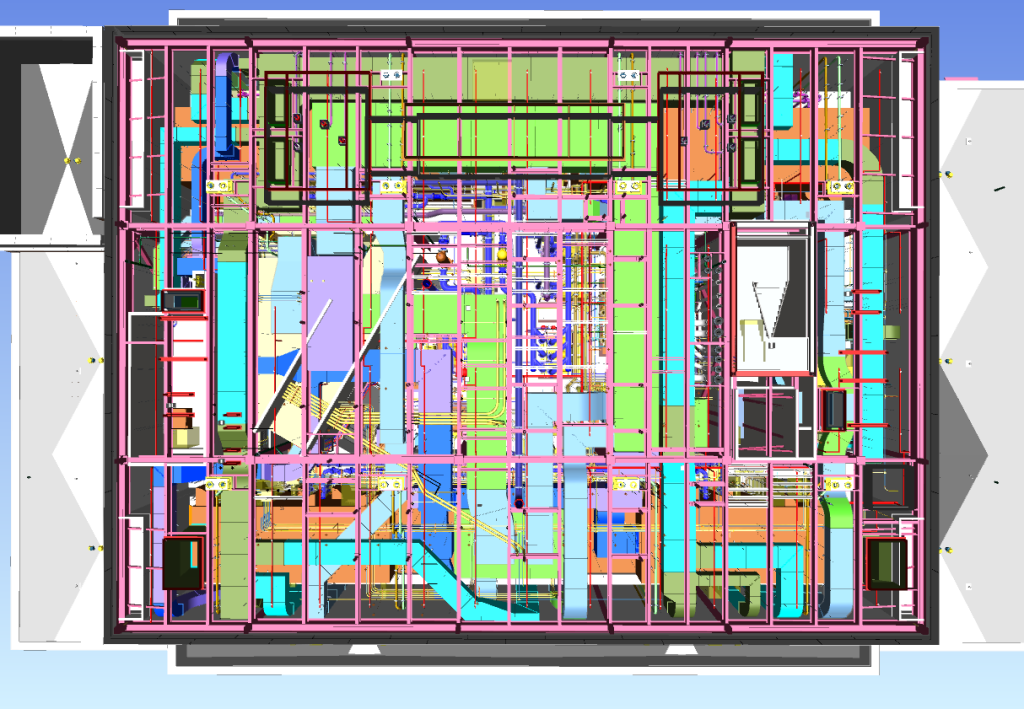
BIM models identify potential coordination issues and produce a digital representation of design, construction, and operations.
Mechanical and electrical equipment can produce hums, fan noises, and undesirable vibrations in performance environments. Equipment rooms should be separated and located away from performance spaces/rooms, while also ensuring vibration isolators are being used for the equipment to reduce noise.
A HOLISTIC APPROACH
Acoustics, lighting, utilities, access, complex MEP systems, and constructability are all key considerations for successful performance venue projects and should be considered concurrently to ensure a successful execution. Complex facilities, like performance venues, require keen coordination and a high attention to detail to carry out their purpose and to function as intended. As trends and technologies advance, the way performance venues are constructed will also continue to evolve to provide the best possible experience for patrons and performers. We are far from the finish line in terms of what is possible. Entertainment will continue to evolve, as will best practices in the design and construction of the facilities that support it.
Previous Post Next Post